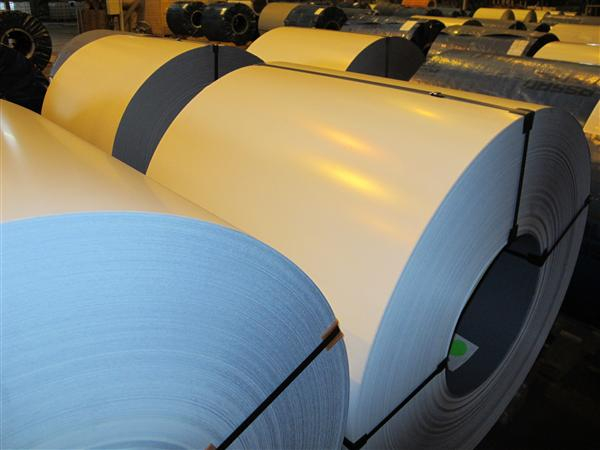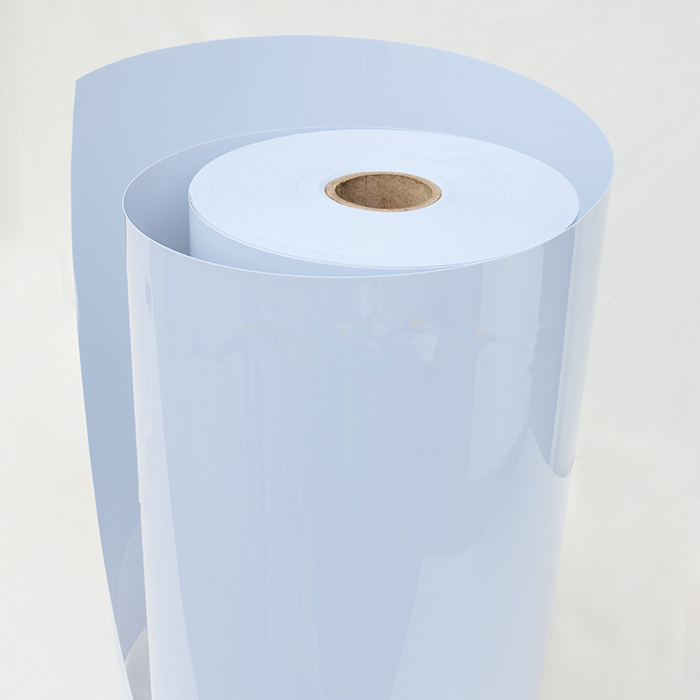Have you ever wondered how the right lampshade can transform a room? Lampshades are essential in lighting design, serving both functional and aesthetic purposes. Choosing the right material is crucial, as it impacts durability and appearance.
In this post, we’ll explore the best materials for lampshades, focusing on the benefits of using PVC for lampshades.
![Lampshade white hard PVC board Lampshade white hard PVC board]()
Overview of Common Lampshade Materials
PVC for Lampshades
PVC, or polyvinyl chloride, is a versatile plastic known for its durability and flexibility. It’s lightweight and resistant to moisture, making it ideal for various applications, including lampshades.
Why Choose PVC?
● Cost-Effective: PVC is generally more affordable than other materials.
● Design Flexibility: It can be easily molded into various shapes and sizes.
● Light Diffusion: Provides excellent light diffusion, enhancing the ambiance of any room.
Acrylic
Acrylic is a popular alternative to glass. It’s lightweight yet strong, offering a similar aesthetic without the fragility.
Pros:
● Clarity: Acrylic can mimic glass's transparency, allowing vibrant light diffusion.
● Durability: Less prone to shattering compared to glass.
Cons:
● Scratching: Acrylic can scratch more easily than other materials.
● Yellowing: Over time, it may become discolored when exposed to UV light.
Fabric
Fabric lampshades come in various styles and colors, providing a warm and inviting look.
Benefits:
● Variety: Available in countless patterns and textures.
● Soft Light: Fabric diffuses light softly, creating a cozy atmosphere.
Drawbacks:
● Maintenance: They can collect dust and stains, requiring regular cleaning.
● Durability: Fabric is less durable than hard materials and may fade over time.
Glass
Glass lampshades offer a classic and elegant look. They come in various types, including frosted, clear, and colored glass.
Types of Glass:
● Frosted Glass: Softens light and provides privacy.
● Colored Glass: Adds a decorative touch and can enhance the room's color palette.
Aesthetic Appeal: Glass has a timeless beauty that can complement any decor. However, it can be fragile, requiring careful handling.
Metal
Metal lampshades, often made from aluminum or brass, provide a modern and industrial look.
Common Metals:
● Aluminum: Lightweight and resistant to rust, making it a practical choice.
● Brass: Offers a vintage appeal but can tarnish over time.
Durability and Design Considerations: Metal shades are sturdy and can withstand wear and tear. They also come in various finishes, from polished to matte, allowing for unique design options.
Advantages of Using PVC for Lampshades
Light Diffusion
PVC is known for its excellent light diffusion properties. It allows light to pass through softly, creating a warm and inviting atmosphere.
Comparison with Other Materials:
● Acrylic: While acrylic also diffuses light well, PVC often offers a softer glow.
● Fabric: Fabric shades can diffuse light nicely, but they may not provide the same level of brightness as PVC.
Durability and Resistance
One of the standout features of PVC is its durability. It resists moisture and dust, making it ideal for various environments.
Key Points:
● Moisture Resistance: PVC does not absorb water, preventing mold growth.
● Dust Resistance: Easy to clean, it requires minimal maintenance.
Fire-Retardant Properties: PVC is often treated to be fire-retardant, ensuring compliance with safety regulations. This makes it a safer option for homes and businesses.
Flexibility and Customization
PVC is incredibly flexible, allowing for easy cutting and shaping. This feature makes it a favorite among designers.
Creative Design Examples:
● Unique Shapes: Designers can create intricate and custom shapes that enhance any space.
● Color Options: PVC can be produced in various colors, enabling endless design possibilities.
Cost-Effectiveness
When it comes to budget, PVC shines. It is generally more affordable than materials like acrylic and glass.
Cost Comparison:
Material | Average Cost per Unit | Notes |
PVC | $10 - $20 | Cost-effective and durable |
Acrylic | $15 - $30 | Higher cost, less durable |
Glass | $20 - $50 | Fragile and expensive |
Why Choose PVC? For budget-conscious consumers, PVC offers a perfect balance of quality and affordability. It allows for stylish designs without breaking the bank.
Comparing PVC with Competing Materials
Translucency and Light Transmission
When it comes to light transmission, PVC holds its own against acrylic.
Comparison of Light Transmittance:
● PVC: Offers good light diffusion, allowing a warm glow to fill the room.
● Acrylic: Known for its high clarity, acrylic transmits light effectively but may create harsher lighting.
Effective Light Diffusion: Even though acrylic might seem superior in clarity, PVC can achieve effective light diffusion through its unique properties. This makes it a great choice for creating a cozy ambiance.
Aging Resistance
Aging is a critical factor in material selection. PVC shows impressive long-term performance when compared to both acrylic and fabric.
Durability Insights:
● PVC: Generally resistant to yellowing and cracking, maintaining its appearance over time.
● Acrylic: While strong, it can yellow and become brittle after prolonged exposure to sunlight.
● Fabric: Tends to fade and deteriorate, especially in high-UV environments.
Longevity Matters: Choosing PVC means selecting a material that will look good for years, even in challenging conditions.
Design Flexibility
Design capabilities are essential when selecting lampshade materials. PVC shines here, offering versatility that rivals acrylic.
Processing Capabilities:
● PVC: Easy to cut, mold, and shape, allowing for intricate designs.
● Acrylic: While also moldable, it may require more specialized tools for complex designs.
Complex Shapes Achievable:
● PVC Examples: Curved lampshades, layered designs, and custom patterns.
● Acrylic Examples: Sleek, modern shapes that highlight transparency.
Environmental Impact
For eco-conscious consumers, understanding the environmental impact of materials is vital.
PVC vs. Acrylic:
● PVC: Often criticized for its production process, but newer methods are improving sustainability.
● Acrylic: Generally considered more eco-friendly, but its production still involves significant energy use.
Considerations for Eco-Conscious Consumers:
● Look for manufacturers that prioritize sustainable practices.
● Assess the lifecycle of the materials, from production to disposal.
Customization Options for PVC Lampshades
Available Thicknesses
When it comes to PVC lampshades, thickness matters. Options typically range from 0.3mm to 2.0mm, each serving different purposes.
Thickness Overview:
● 0.3mm: Ideal for lightweight designs. Great for temporary or decorative uses.
● 1.0mm: A versatile choice, balancing durability and flexibility. Suitable for everyday lampshades.
● 2.0mm: Perfect for more robust applications. Offers enhanced durability and stability.
Impact on Design and Light Diffusion:
● Thicker materials can provide better light diffusion, creating a softer glow.
● Thinner shades may allow for sharper light, which can be desirable in specific designs.
Color and Finish Choices
PVC lampshades come in a wide range of colors and finishes, allowing for personalized aesthetics.
Color Options:
● Standard Colors: White, beige, and gray are popular choices.
● Custom Shades: Many manufacturers offer custom color options to match any decor.
Finish Variations:
● Matte Finish: Provides a subtle look, reducing glare.
● Glossy Finish: Reflective surfaces add a modern touch.
● Embossed Patterns: Textured finishes create visual interest and depth.
Aesthetic Impact: Choosing the right color and finish can dramatically change the overall appearance of a lampshade. For instance, a glossy finish can enhance brightness, while a matte finish softens the light.
High-Quality Custom Printing
Customization doesn't stop at color and thickness. High-quality printing techniques allow for unique designs on PVC lampshades.
Printing Techniques:
● UV Printing: Provides vibrant colors and durability, perfect for detailed images.
● Screen Printing: A traditional method that works well for bold graphics.
● Digital Printing: Offers flexibility for small runs and intricate designs.
Decorative Enhancements:
● Custom Embossing: Adds texture and a tactile element to the design.
● Perforations: Create patterns that allow light to shine through, enhancing the visual appeal.
![300 micron milky white lampshade PVC sheet 300 micron milky white lampshade PVC sheet]()
Choosing the Right Material for Your Lampshade
Factors to Consider
Selecting the right material for your lampshade involves several important factors.
1. Purpose of the Lampshade:
● Ambient Lighting: If you need soft, diffused light, materials like PVC work well. They provide a warm glow, perfect for creating a cozy atmosphere.
● Task Lighting: For focused light, consider materials like acrylic that allow more direct illumination.
2. Style and Decor Compatibility:
● Think about your room's overall aesthetic. Is it modern, traditional, or eclectic?
● PVC lampshades come in various colors and finishes, making them versatile enough to fit different styles.
3. Maintenance and Cleaning Requirements:
● Some materials require more upkeep than others.
● PVC is generally easy to clean; a simple wipe down can keep it looking fresh. In contrast, fabric shades may need more frequent washing or dusting.
Personal Preferences and Budget
Your personal style and budget play crucial roles in material selection.
1. Personal Style Influences:
● Your lampshade should reflect your taste. Do you prefer bold patterns or subtle textures?
● PVC offers a range of customization options, allowing you to express your style.
2. Balancing Quality and Cost:
● Quality materials often come at a higher price. However, investing in durable options like PVC can save money in the long run.
● Consider your budget carefully. PVC lampshades can be cost-effective while still providing great quality.
Conclusion
In summary, PVC is an excellent choice for lampshades. It offers durability, versatility, and easy maintenance.
Consider your specific needs when selecting materials. Think about style, purpose, and budget.
For your next lampshade project, explore PVC options. Check out local stores or online retailers for a variety of choices!
FAQ
Q: Can PVC lampshades be used outdoors?
A: Yes, PVC lampshades are weather-resistant and suitable for outdoor use.
Q: How do I clean and maintain PVC lampshades?
A: Simply wipe them down with a damp cloth to remove dust and stains.
Q: Are PVC lampshades safe for use in homes with children or pets?
A: Yes, PVC is durable and less likely to break, making it a safe option.
Q: What are the most common colors and finishes available for PVC lampshades?
A: Common colors include white, beige, and gray, with finishes like matte, glossy, and embossed.
English
简体中文
繁體中文
العربية
Français
Русский
Español
Português
Deutsch
italiano
日本語
한국어
Nederlands
Tiếng Việt
ไทย
Polski
Türkçe
አማርኛ
ພາສາລາວ
ភាសាខ្មែរ
Bahasa Melayu
ဗမာစာ
தமிழ்
Filipino
Bahasa Indonesia
magyar
Română
Čeština
Монгол
қазақ
Српски
हिन्दी
فارسی
Kiswahili
Slovenčina
Slovenščina
Norsk
Svenska
українська
Ελληνικά
Suomi
Հայերեն
עברית
Latine
Dansk
اردو
Shqip
বাংলা
Hrvatski
Afrikaans
Gaeilge
Eesti keel
Māori
සිංහල
नेपाली
Oʻzbekcha
latviešu
অসমীয়া
Aymara
Azərbaycan dili
Bamanankan
Euskara
Беларуская мова
भोजपुरी
Bosanski
Български
Català
Cebuano
Corsu
ދިވެހި
डोग्रिड ने दी
Esperanto
Eʋegbe
Frysk
Galego
ქართული
guarani
ગુજરાતી
Kreyòl ayisyen
Hausa
ʻŌlelo Hawaiʻi
Hmoob
íslenska
Igbo
Ilocano
Basa Jawa
ಕನ್ನಡ
Kinyarwanda
गोंगेन हें नांव
Krio we dɛn kɔl Krio
Kurdî
Kurdî
Кыргызча
Lingala
Lietuvių
Oluganda
Lëtzebuergesch
Македонски
मैथिली
Malagasy
മലയാളം
Malti
मराठी
ꯃꯦꯇꯥꯏ (ꯃꯅꯤꯄꯨꯔꯤ) ꯴.
Mizo tawng
Chichewa
ଓଡ଼ିଆ
Afaan Oromoo
پښتو
ਪੰਜਾਬੀ
Runasimi
Gagana Samoa
संस्कृत
Gaelo Albannach
Sepeti
Sesotho
chiShona
سنڌي
Soomaali
Basa Sunda
Wikang Tagalog
Тоҷикӣ
Татарча
తెలుగు
ትግንያውያን
Xitsonga
Türkmençe
संस्कृत
ئۇيغۇرچە
Cymraeg
isiXhosa
ייִדיש
Yorùbá
isiZulu












